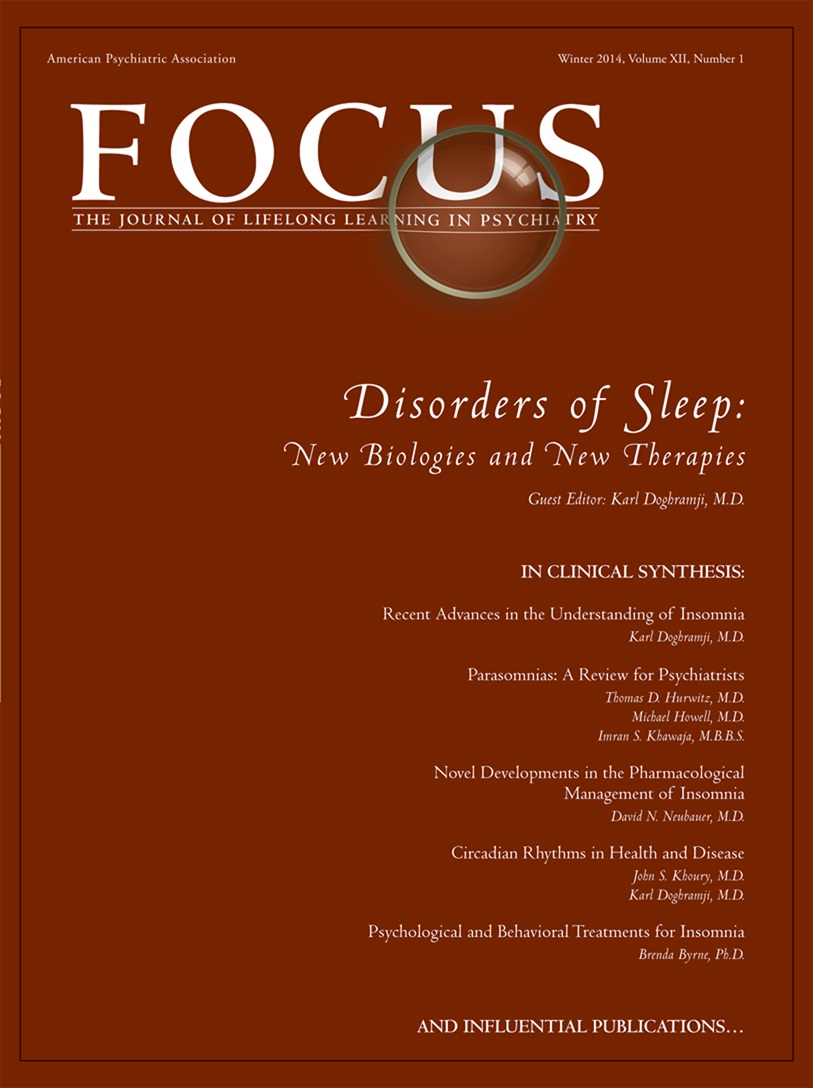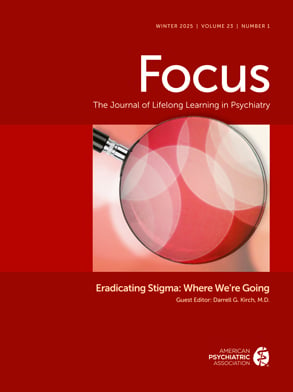Hypnotic drugs are effective medications in the treatment of insomnia, but are often associated with tolerance, residual morning sedation, cognitive impairment or disorientation, and the potential for dependence and addiction. Their effectiveness wanes after several weeks of continuous use. Thus, psychosocial treatments are key to the chronic management of sleep disturbance. Effective interventions that are supported by evidence include sleep hygiene, restriction of sleep to nighttime, cognitive therapy to control presleep thoughts, and relaxation (
1). These treatments require active therapeutic engagement of the doctor and patient in both the conceptualization of the problem and the treatment solution. For patients coming to the psychiatrist expecting only medication, and for those for whom compliance with regular daily routines and skill practice is more difficult, effective communication, psychoeducation, and skilled engagement are particularly crucial.
Clinical Vignette
“Look,” Mr. Smith began before he made it fully into the office. “I’m all for sleep hygiene and all of that, but I still can’t sleep! We’ve got to go back to Valium. It’s the only thing that really works.”
Dr. Fernandez paused, thought for a moment as they both sat down, and then asked, “Well then, tell me what happened.”
“Well, for one thing, the sleep hygiene thing didn’t work. And second, the sleep hygiene thing didn’t work. What is it that you want to know?” Mr. Smith asked sarcastically. Dr. Fernandez knew that Mr. Smith could be difficult. His internist had referred Mr. Smith to Dr. Fernandez after completing a full medical workup. He told Dr. Fernandez that “You are good with this kind of patient. But, you should know that he ‘doctor-shops’ to find someone that will prescribe benzodiazepines.” Still, Dr. Fernandez believed Mr. Smith’s sleep problems were real—putting him at risk of losing his job if he continued to arrive late or fall asleep at his desk.
Dr. Fernandez started again, this time with a playful demeanor, “I think I am getting your gist. You seem to be telling me that the sleep hygiene techniques didn’t work for you. Yes?”
“Yes, you’re catching on pretty quick,” quipped Mr. Smith.
“Ok. So, let’s go through the whole story to pick it apart together. Spare none of the gory details,” replied Dr. Fernandez with a smile.
Mr. Smith related his experience with stopping caffeine by noon, not having his usual “nightcap” drink before bed, and using the relaxation breathing technique he had been taught. It was clear that Mr. Smith was having a difficult time adhering to all of the suggestions, and he quickly gave up when they didn’t work immediately. None of the suggestions had been adhered to as recommended. “And the melatonin didn’t work either,” Mr. Smith finished.
When Mr. Smith had finished recounting his negative experiences using nonpharmacological treatment of his insomnia Dr. Fernandez said, “You thought that stopping caffeine by noon and reading a book rather than watching TV may have been just a little helpful. Right?”
“Only a tiny bit,” replied Mr. Smith quickly.
“But you think that Valium is most helpful, but it stops working after a while.”
“Yes, but it’s the only thing that does work,” remarked Mr. Smith.
“How about if we try three things for several weeks, and see if that will help?”
“Which things?” Mr. Smith queried dubiously.
Dr. Fernandez wrote out the suggestions: (1) no caffeine after noon; (2) read until you feel sleepy and then go to your bed; and (3) I’d like you to try a different medication similar to Valium but faster acting. Zolpidem 5 mg––take it when you’re in bed because it acts rapidly. “Just check these off if you do them every day. Be honest, we want to really know what works and what doesn’t. What do you think of this plan?”
“I’ll give it a try. But, will you consider Valium if this doesn’t work? ”
“First lets evaluate how this whole plan works using all of these tools together. I think if we work together with all of the tools that are known to help insomnia, that we can help you sleep better every night.”
Mr. Smith smiled, and in an almost apologetic tone replied, “Ok, doc. Maybe you’re not as clueless as I thought. See you next week?”

